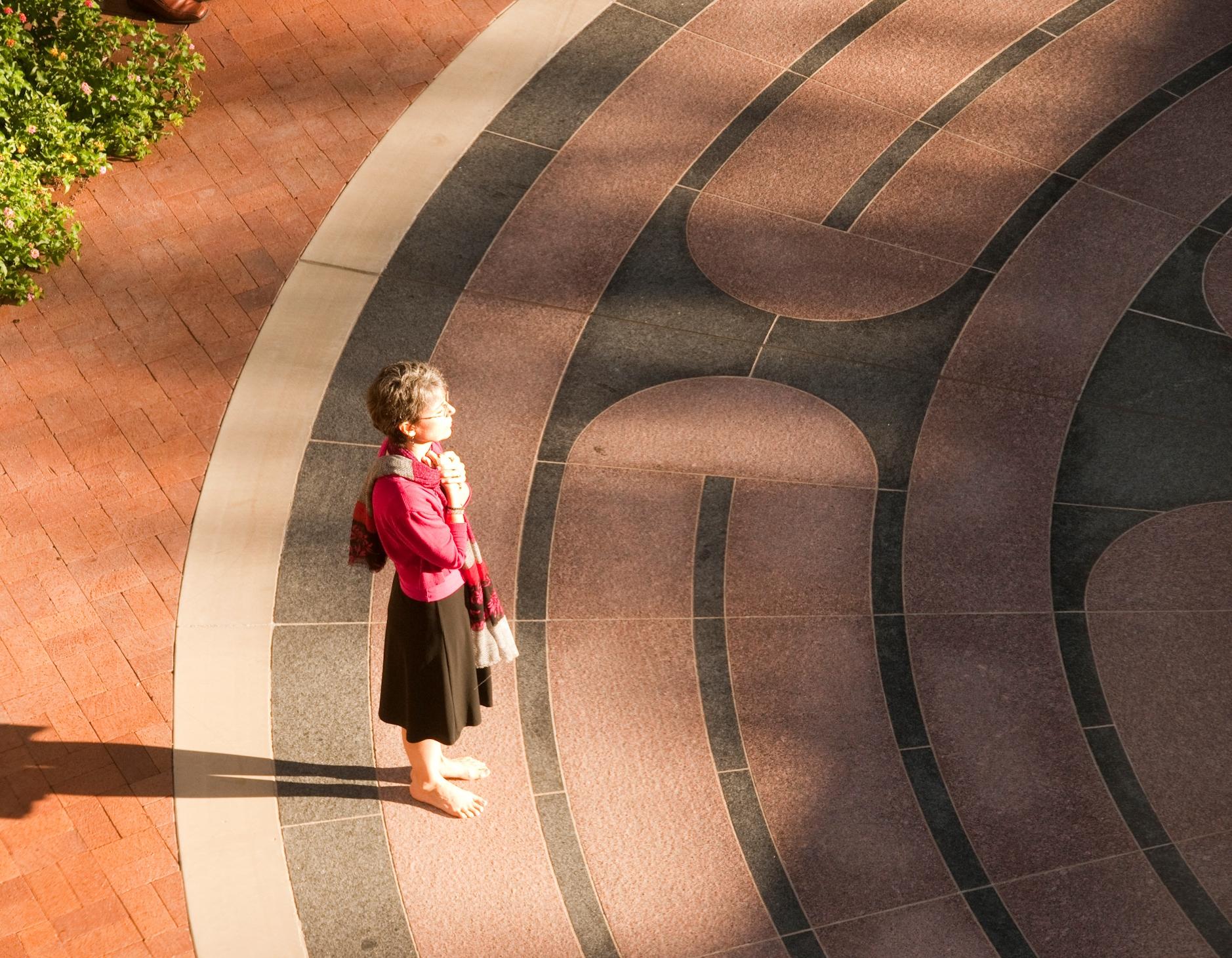
鲁本L.F. Habito迷宫
The Habito迷宫 was given in honor of Dr. 鲁本L.F. Habito, professor of World Religions and Spirituality at Perkins School of Theology, by Dodee Frost Crockett and William B. 克罗克特,小., and was dedicated September 11, 2009.
The Habito迷宫—a seven-circuit design, based on the eleven-circuit medieval labyrinth in France’s Cathédrale Notre-Dame de Chartres—is located in the Frost Marcus Labyrinth Courtyard Gardens, in the open and accessible space between Prothro and Selecman Halls at Perkins School of Theology. The path of the labyrinth is about one-third of a mile long and takes about 20 minutes to walk at a moderate pace.
The labyrinth is available 24 hours a day, 一周七天, to anyone who seeks to walk the path toward peace.
什么是迷宫?
Labyrinths are ancient human symbols known to go back at least 4,000 years. The labyrinth symbol was incorporated into the floors of the great Gothic pilgrimage cathedrals of France in the 12th and 13th centuries. The most famous extant design is in the nave floor of the Cathédrale Notre-Dame de Chartres outside of Paris, which is now more than 800 years old.
For Christians, labyrinths often held specific spiritual purposes. They served as a way to make a sacred pilgrimage even if one could not undertake an actual journey to a holy place (the shrine of a saint) or to the Holy Land. 他们用身体, the soul and the mind focusing upon movement along a defined path which fostered a sacred promise that if one followed the one way of life, 这将带来和平.
今天, you will find all types of labyrinths throughout the United States, being used for reflection, 冥想, 祈祷和安慰. During the past two decades, labyrinths have undergone a dramatic revival, beginning in churches and now encompassing religious communities of all types: hospitals, 卫生保健设施, spas and retreat centers, schools and universities, 公园, 纪念馆, 愈合花园, 监狱, and even progressive businesses.
为什么走迷宫?
Personal and spiritual growth
祈祷
为了弄清楚
To be in the present moment
感受内心的平静
安抚你的神经
悲伤
恢复精神
要记住
为了庆祝
探索
连接
The Process of Walking the Labyrinth
Move to the center of the labyrinth and let go of the details of your life to quiet the mind.
When you arrive at the center, remember that this is a place of 冥想, illumination and prayer. Receive what is there for you to receive.
当你离开中心, you begin the third stage, union with God in Christ and service in the world.
Guidelines for Walking the Labyrinth
Maintain silence for your benefit and that of others.
Take time before you walk to clear your mind and become aware of your breathing.
Proceed along the Labyrinth at your own pace, beginning to pray. As you meet other walkers, gently give way to your meeting and passing.
It is worth remembering that whatever happens along the way is not a distraction, but part of being Christ’s disciple in this world in which we are called to serve.
Take time after your walk to reflect and meditate.
关于 the Construction of the Habito迷宫
直径: 35'-8"
材料: Mesabi Black, quarried in Babbitt, Minnesota; and Radiant Red, quarried in Fredericksburg, Texas.
完成: The path, radiant red, is provided in a non-slip "thermal" finish. The mesabi black is a "diamond 10" finish, a thermal process with a high pressure water jet treatment to boost the color of the dark stone. The center is "diamond 8" finish, 一种抛光, 近的, suitable for adding future inscriptions or engravings.
 Guide for Walking/Praying the Labyrinth (JPG) | (PDF)
Guide for Walking/Praying the Labyrinth (JPG) | (PDF)
和平的提醒
耐用的, weatherproof white Peace Pole is inscribed with the phrase, “May Peace Prevail on Earth” in eight languages (English, 德国, 日本, 塔加拉族语, 阿拉伯语, 希伯来语, Spanish and Cherokee) and placed in the garden adjacent to the Habito迷宫.
本着博士的精神. Habito’s closure for his centering exercises, the Peace Pole reminds us to ask the Holy Spirit to “come, renew the face of the Earth,” and help peace prevail for all people.